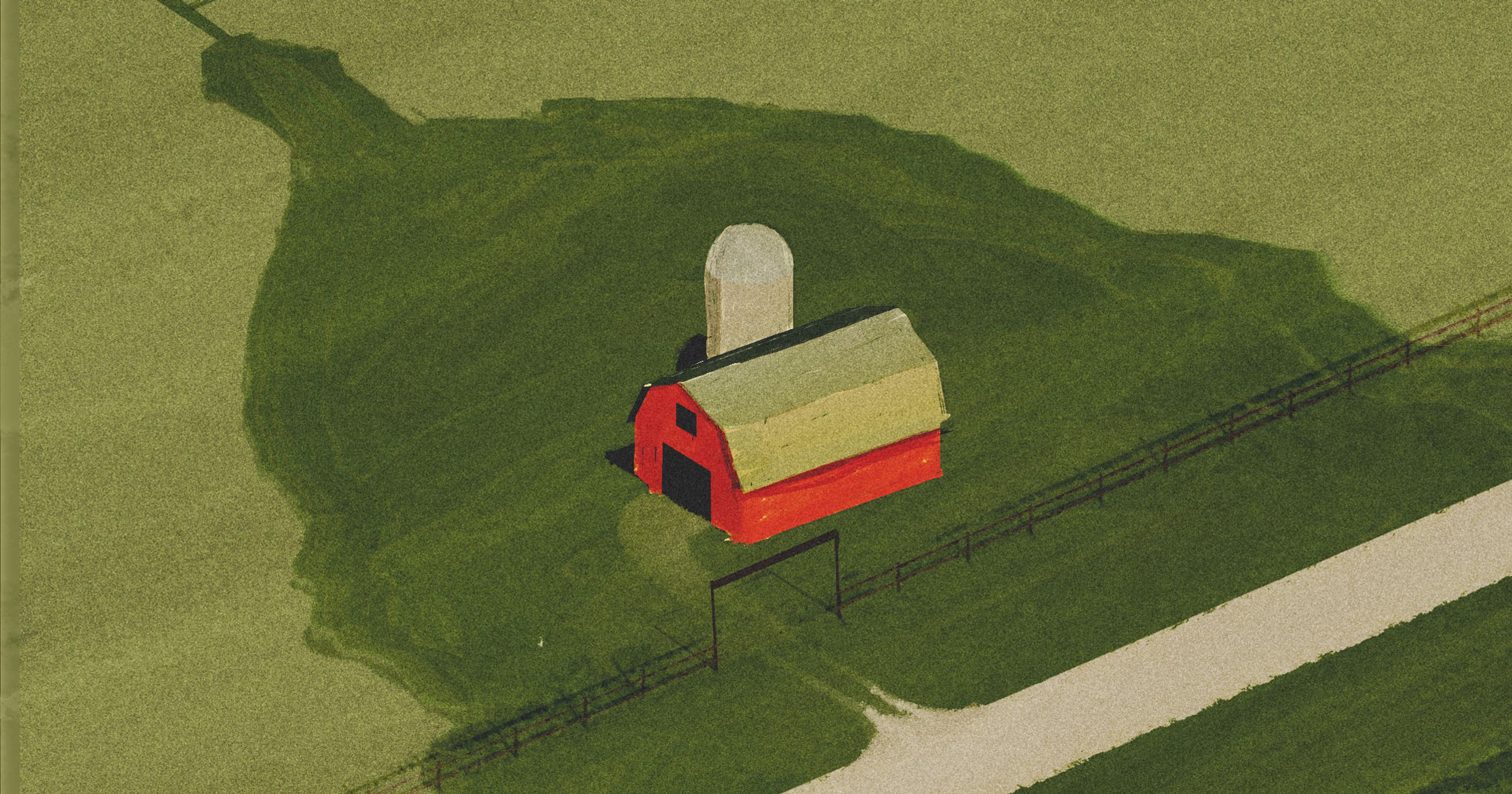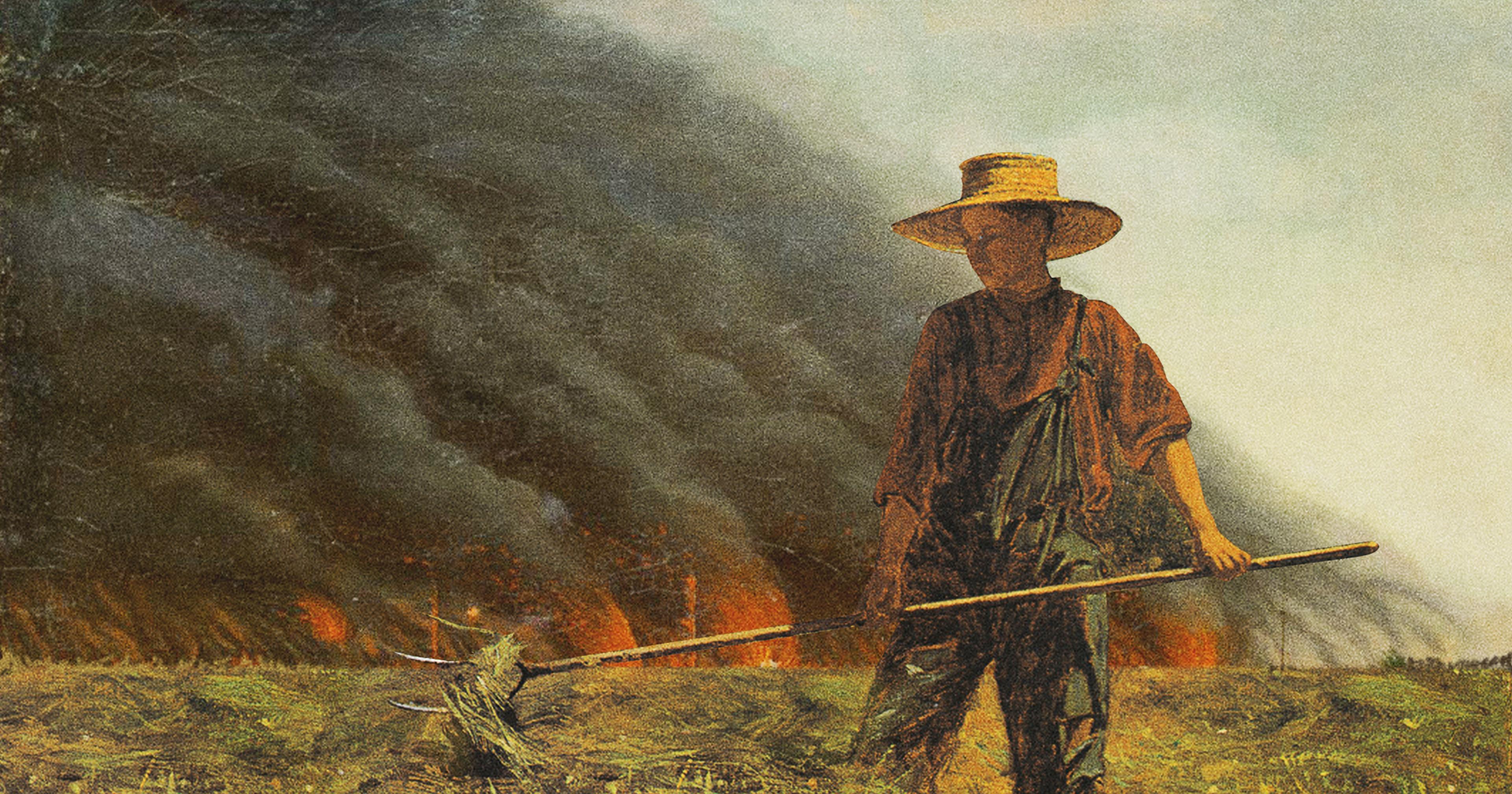A new study found that over 30 million acres of arable land has been abandoned since the 1980s. Spoiler: It might be a rare win for both farmers and the environment.
To describe the 30 million acres of America’s cropland that have transitioned out of row-cropping since the mid-1980s, the term “abandoned” isn’t quite accurate. It invokes something washed-up, useless, even tragic. Instead, we could call it retired land. Land that’s going through a midlife crisis. Land that just doesn’t know what it wants to be yet. Land that some researchers believe is perfectly positioned — in its second act — to contribute to climate solutions and habitat conservation without putting a strain on farmers. And land that still has plenty of value even if it’s not producing cash crops.
This year, data scientists at the Great Lakes Bioenergy Research Center in Wisconsin published a study of abandoned cropland that gives important insight into where and when land has transitioned out of food production. Using satellite data from 1986 to 2018, the data scientists trained an AI to track and analyze patterns of cultivation over that period and managed to produce the most granular map to date of abandoned cropland in the U.S. While previous estimations of abandoned land, like the USDA Census of Agriculture, relied on county-level data, this holistic new methodology allows researchers to see what’s going on at a field level — and offer recommendations for land use tailored specifically to that field’s needs.
Tyler Lark, one of the study’s authors, said this is just the beginning of understanding land abandonment patterns in this country. “Historically a lot of the estimations have been pretty coarse and not super accurate,” he said. “This is the first step to understand what’s really going on.”
Lark’s team found land in the contiguous U.S. was abandoned at roughly 1 million acres per year during the study period. Half of that abandoned land became grassland and pasture, while almost 20 percent transitioned into shrubland or forest, and eight percent into wetlands. They also looked at USDA data from a similar period to see whether abandonment correlated to enrollment in federal Conservation Reserve Programs (CRPs), which offer landowners cash incentives to stop agricultural production on their most ecologically sensitive parcels for a restoration period of 10-15 years.
Lark was surprised that less than 20 percent of the abandoned land had been absorbed by CRPs. In fact, abandoned cropland and CRP land are fairly “distinct pools.” The next round of research, he said, will try to answer why land is being abandoned at the rate that it is, though there’s some speculation that certain abandonment hotspots may result at least partially from irrigation challenges and droughts.
Even without that information, Lark believes the new zoomed-in maps “open up all these opportunities for climate mitigation,” identifying open lands that are not reserved for sensitive habitat restoration and are also not in high demand or even viable for food production — what Lark calls the “sweet spots” for renewable energy projects like wind and solar farms.
While owners will still make the ultimate decisions about the use of their land, one “really cool application” of the data, Lark said, is that it can “identify an area that’s not a pristine, native ecosystem, but also not prime, productive agricultural lands. It could help reduce some conflict that’s arising in that sector.”
As funding for renewable energy infrastructure ramps up, there’s a growing unease among food producers who are worried we’re running out of space, and that protecting agricultural land isn’t a priority among lawmakers.
Lark believes the new zoomed-in maps “open up all these opportunities for climate mitigation.”
Senators Tammy Baldwin (D-WI) and Chuck Grassley (R-IA) introduced a bill last September that proposes incentivizing clean energy projects with clear protections for the farmland they’re built on top of. In a press release, Baldwin’s team identified that 83 percent of new solar projects through 2040 will be installed on farmland and ranchland, with almost 50 percent of these projects “placed on the most productive, versatile, and resilient land.”
Yanhua Xie, a data scientist at the Great Lakes Bioenergy Research Center and an author on the study, believes his team’s research can be used to pioneer climate solutions that don’t compromise quality agricultural land.
“We see a lot of wind and solar farms, and many of those are actually built on active cropland,” he said. “Abandoned cropland is one of the most important marginal lands for bioenergy production [and] can be used to reduce some of that competition, and keep the active land for food production purposes.”
Wildlife conservation firms have also requested the abandonment data to help inform their projects. Playa Lakes Joint Venture is one such group, focused on migratory birds in the south and western Great Plains, a huge area that includes parts of Colorado, New Mexico, Texas, Oklahoma, Kansas, and Nebraska, and is irrigated by the Ogallala Aquifer. The region also happens to be one of the biggest abandonment hotspots in the nation, per the study.
Stephen Chang, a data scientist at the joint venture, said a focus of his work is to support “agricultural transition” to “land use outcomes that benefit producers, landowners, and wildlife.” In order to do that, his team must understand the life-cycle of row-cropped land after it’s been abandoned — whether it naturally transitions to grasslands or is incorporated into a grassland CRP, and whether that transition relates to the encroachment of woody plants throughout the grasslands, which is one of the region’s biggest drivers of bird habitat loss.
“We see a strong role for landowners as stewards, because these landscapes need to be actively managed.”
“We see a strong role for landowners as stewards, because these landscapes need to be actively managed. Otherwise woody plants will move in and decrease grassland habitat for birds in our region,” Chang’s colleague, conservation design director Zach Hurst, explained. “Throughout North America, grassland birds are experiencing a significant decline. To keep lands in grass is important, and this research helps us understand a little more about when lands are abandoned and if they are going to grass or not.”
Sometimes data jargon like “abandoned land” fuels attitudes and perceptions of what’s valuable and what isn’t. But land isn’t lacking in value just because it isn’t producing cash crops. There are all kinds of applications for it — and all kinds of roles people can take in maintaining it.
“One of our primary goals is to promote outcomes across our landscape that are a net positive for birds and people,” Chang said. “The goal is always to keep land in production and to keep working lands working. It’s not to remove the stewards from [...] stewarding their lands.”
At the Great Lakes Bioenergy Research Center, Lark said there’s a lot of interest in the bioenergy potential of switchgrass, a native perennial grass found in prairies and on land that’s been left to rewild — otherwise known as land that’s been abandoned.
Grasslands need disturbance to be maintained anyway, Lark said, which can look like controlled burns, animal grazing, or harvesting. That those existing grasses can be converted to biofuels is an added bonus.
Regardless of what the data says, land is never really abandoned, and certainly never worthless. It’s just in between gigs.










